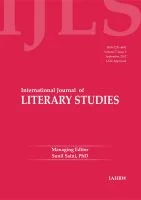Duality of Emotions of Bisexuality: A Critical Analysis of Rao’s Lady Lolita’s Lover (2015)
Original price was: ₹ 201.00.₹ 200.00Current price is: ₹ 200.00.
Page: 01-04
Himadri Roy (School of Gender and Development Studies, Indira Gandhi National Open University, New Delhi, Delhi)
Description
Page: 01-04
Himadri Roy (School of Gender and Development Studies, Indira Gandhi National Open University, New Delhi, Delhi)
Queer literature is a very naive domain in India. Very few authors have the courage to speak about it in a true literary sense and deal with the themes relevant to the queer community of the country. Although Hoshang Merchant is one of the trendsetters with his edited volume on queer writings of India, but R. Raj Rao is considered the first novelist who has set the path for many authors who would write on queer themes. His The Boyfriend (2003) has given researchers and scholars to look into this aspect of Indian literature. Most of his works focus around queer themes related to class, caste, nation and region. But his latest novel Lady Lolita’s Lover (2015) breaks many prejudices and inhibitions regarding the queer community. Beside his themes of class, caste and region, he introduces a new theme of cultural diversity and tries to bring a new perspective within the domain of queer people. The main protagonist, Sandesh Gaikwad, is shown as a character, whose sexuality encompasses around class and consumerist culture. From an upper-middle-class educated woman, Lolita Sengupta/Mukherjee, who devours the chastity of a mere adolescent, to the drastic shift of sexual orientation of being emotionally and sexually involved with a man, Jeevan Reddy. One introduces him to the luxury of upper-class lifestyle, while the other grooms him to be an upper-class. But both much older to him, uses him as a sex-toy, through their capitalist consumerism. Lolita uses him to accomplish her sexual needs. Lolita is shown as a sexually deprived wife of Aroop Sengupta, who is in Merchant Navy. Jeevan Reddy, better known as JR, uses him to question the Indian legal system, which he feels is gender biased. So, he wants the sections pertaining to pedophilia to be gender-neutral, as Jeevan feels that women can also be pedophiles. Lolita is portrayed as a straight woman, while Jeevan is portrayed as a gay man. But Sandesh is shown as a bisexual character, who uses his sexuality to take the benefit of the situation. First with Lolita to satisfy his adolescent sexual urges and second to take revenge against Aroop, he lets himself be used sexually by Jeevan. Jeevan gives him care and love, and makes him realize the difference between lust and romance, while Lolita makes Sandesh understand the utilization of his sexual needs through proper means. This paper will try to unveil the psychology of these three sexualities, mainly focusing on bisexuality, while gay and straight people’s psychology will also be dealt with, reference to class, region, language and culture.

